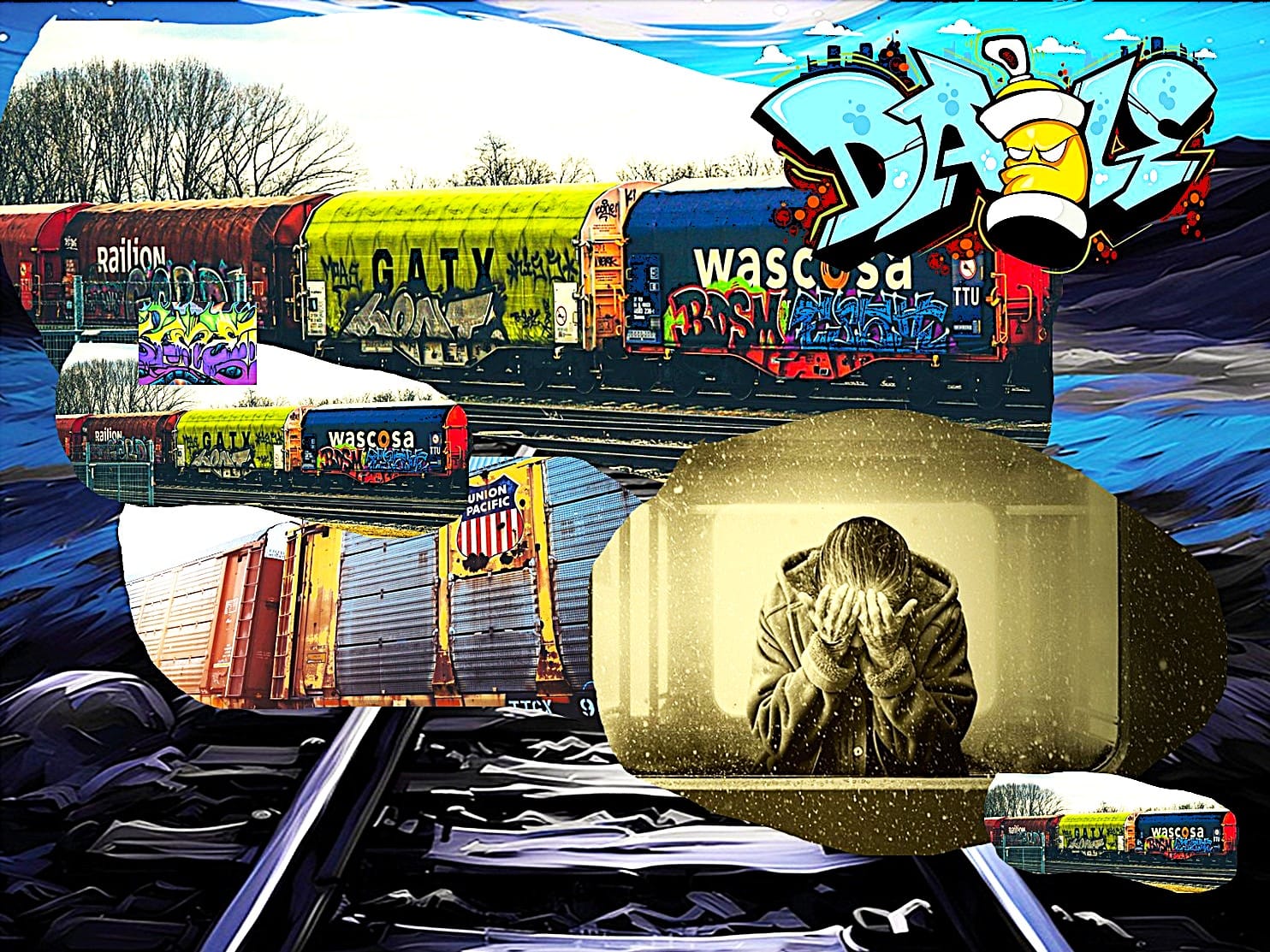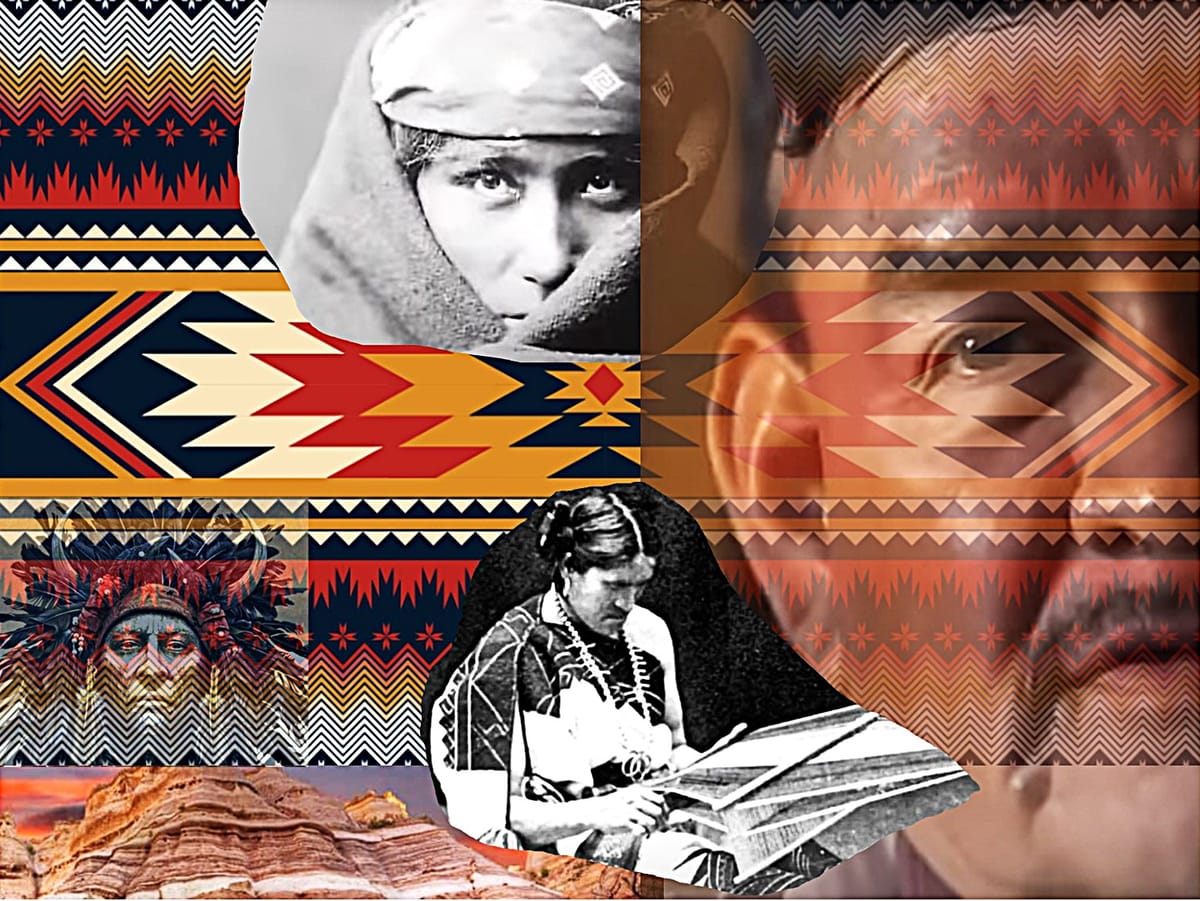Digressions on Time, Change, and Cultural Momentum
It was a well-known sight from my years as a municipal park ranger; an older transient leaned towards a brick wall as a youthful man with a canine appeared nervously down the road awaiting assist, each of them matted and really a lot in want of social providers. In a couple of minutes, medics would arrive to evaluate the older man, asking if he had vomited, taking his vitals whereas the canine watched with a captivating expression of concern and curiosity, a typical name for the city wilderness. Each males have been Navajo. Gallup, New Mexico, sits between worlds, within the midst of rez tradition with a rising native artwork scene that reaches into the city’s future.
Time stands as the final word mediator, watching as we transfer into expanses of desert, furlongs of sand overlaying the previous. One thing about New Mexico feels misplaced within the ahead momentum of years, as if the land nonetheless waits for a decision.
Based in 1881 for the railroad, Gallup sits inside McKinley County on the fringe of the Navajo reservation. The land is punctuated by buying and selling posts the place one can discover intricately-decorated pottery in nice abundance, in addition to jewellery designed by Navajo, Hopi, and Zuni artists. And, the place Tonopah, Nevada has its well-known Clown Motel, Gallup is house to El Rancho Resort which stays a landmark of haunting renown.
Director D. W. Griffith and his brother determined to make use of Gallup for filming, so the latter constructed the resort in 1936 to deal with actors and crew members. An enthralling three-story construction, El Rancho Resort displays the city’s many contrasts and, probably, guards numerous Hollywood secrets and techniques within the shadow of its rooms.
As for time, Gallup depicts its difficult previous as a sentinel, of types, a drained warrior that trembles earlier than the longer term, proud but nonetheless unsure, gifted however very a lot in want of therapeutic. With this, we regard wounds from the previous and take into account their significance. Figuring out the historical past of native life in New Mexico, the wars, violence, and the gradual destruction of tradition, we are able to look to a quite well-known guide for a little bit of perception.
“Tradition shock is the impact that immersion in a wierd tradition has on the unprepared customer.”
This citation comes from Alvin Toffler, one-time affiliate editor of Fortune Journal and Cornell College Visiting Professor. By way of his work, the studying public of 1970 was instructed powerfully, taught to view the modifications wrought by quickly advancing know-how as an unfamiliar set of customs from a wierd land. And what would immersion on this alien tradition deliver to our society? With a shock equal to {an electrical} cost, the longer term would impose a set of cultural requirements on the inhabitants, the substance of which you would need to settle for or, as a consequence, be displaced by as a casualty of progress. (1)
Toffler’s work got here to thoughts once I thought-about the plight of native tribes. To some extent, we would say that the Navajo, Hopi, and Zuni of the American Southwest have been early recipients of the modifications Toffler outlined. As for the sheer weight of the affect, we replicate on the phrases of Navajo tribe member Roy Smith. He commented on the remedy of indigenous kids and the way they have been instructed within the methods of change:
“Anytime you say one phrase of Navajo or one thing, they’ll shave a bar of cleaning soap, and so they put it in your mouth. They usually let you know to clean it out.” (2)
The lengthy stroll of tears and the fearing time (when contact with the US Military devastated the tribes) stay uppermost within the minds of indigenous peoples.
As for cultural shifts and future shocks, we are able to rightfully name lots of them acts of genocide, hostilities both overtly administered by warfare or regularly imposed by means of social insurance policies. In both case, they’re changes made to the very core of a given society, the architects of which have a set of desired outcomes in thoughts. Maybe we see the identical sample repeating itself as we speak, manifesting in numerous components of the world.
Persevering with our reflection, we take into account the theme of movement, ahead momentum chopping a swathe by means of the desert in any respect hours of the day and evening. Right here, we regard freight trains.

Numerous vehicles and engines chug by means of the panorama, sometimes blaring their whistles by means of the new air, marred by graffiti from unseen drifters. To a point, these machines symbolize the longer term shock historical peoples as soon as endured, being immersed inside a wierd tradition and compelled to regulate. The previous methods stay, tattered however resilient, because the engines of commerce lower by means of ancestral lands with noise and relentless momentum.
Works Cited:
1) Toffler, Alvin. Future Shock (New York: Bantam Books) 1970. pg. 10.
2) Smith, Roy. (Interview given for Lengthy Stroll of Tears: The Navajo: PBS Utah Productions, 2007).
For Additional Research:
Navajo Historical past (Edited by Ethelou Yazzi and oral and written accounts compiled underneath the route of the Navajo Curriculum Middle) 1982.
Footprints of Hopi historical past = Hopihiniwtiput kukveni’at (Edited by Leigh J. Kuwanwisiwma, T. J. Ferguson, and Chip Colwell) (Tuscon, Arizona: The College of Arizona Press) 2018.
Linford, Laurance D. Navajo Locations: Historical past, Legend, Panorama (Salt Lake Metropolis, Utah: College of Utah Press) 2000.
Zuni Historical past (Sponsored by the Zuni Historical past Challenge in Cooperation with the Institute of the American West) (Solar Valley, Idaho) 1983.
For extra info, you’ll be able to go to the College of New Mexico Library. Benefit from the journey!

0 Comment